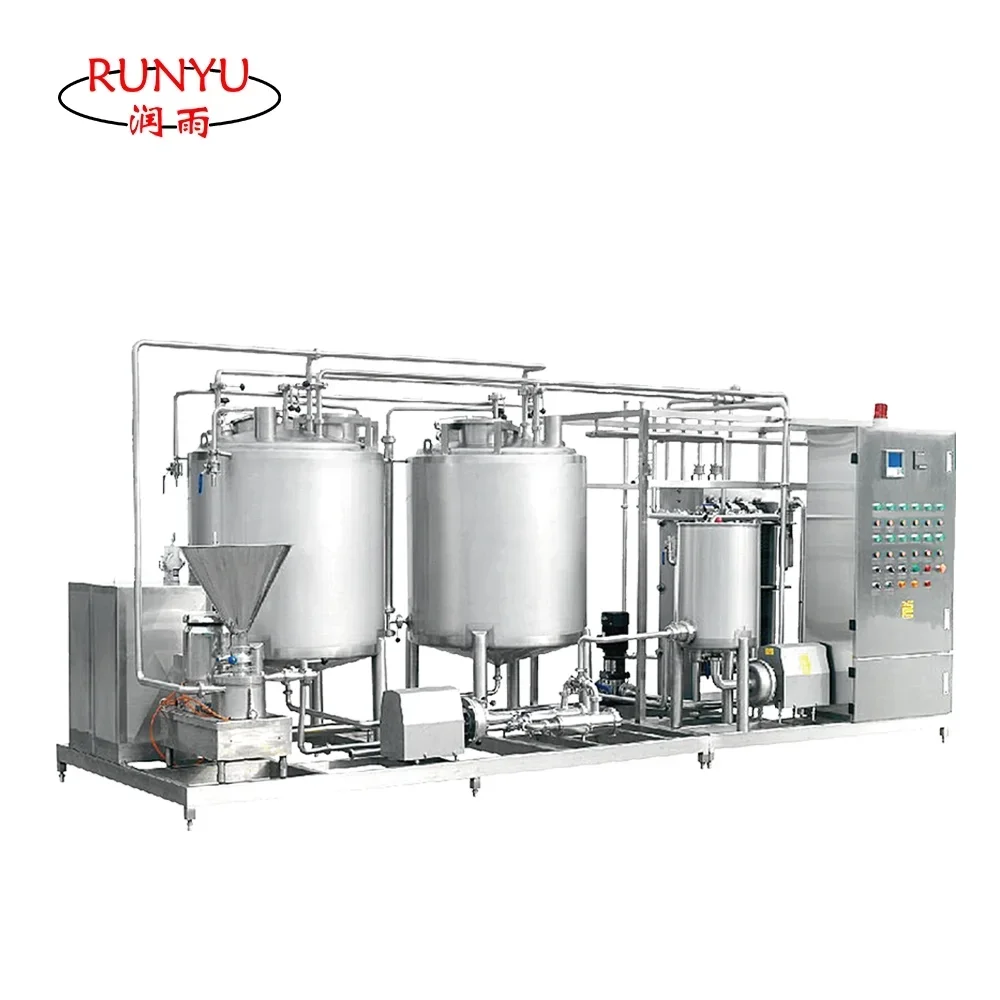In the competitive world of ice cream production, enhancing production efficiency is crucial for maintaining a competitive edge. High-Temperature Short-Time (HTST) pasteurization technology has emerged as a game-changer in ice cream mixing plants, offering numerous advantages that boost overall productivity and product quality.

What is HTST Pasteurization?
HTST pasteurization is a food processing method where the product is rapidly heated to a high temperature, typically between 161°F (72°C) and 176°F (80°C), for a short duration—usually 15 to 30 seconds. This process effectively kills pathogenic bacteria and extends the shelf life of the product without significantly altering its taste, texture, or nutritional value.
Advantages of HTST Technology in Ice Cream Production
Enhanced Food Safety
One of the primary benefits of HTST pasteurization is improved food safety. By rapidly heating and cooling the ice cream mix, it eliminates harmful microorganisms, reducing the risk of foodborne illnesses. This ensures consumer safety and protects the brand's reputation.
Improved Shelf Life
The rapid heating and cooling process also inactivate enzymes and stabilize the mix, which extends the shelf life of the ice cream. Products can stay fresher for longer, reducing waste and enhancing distribution possibilities.
Consistent Quality
HTST technology ensures a more consistent product quality. The precise temperature control and short processing time minimize changes in the mix's composition, preserving flavors, textures, and colors. This consistency is vital for maintaining customer satisfaction and brand loyalty.
Energy Efficiency
Compared to traditional pasteurization methods, HTST is more energy-efficient. The rapid heating and cooling cycles reduce the overall energy consumption, lowering operational costs and contributing to a more sustainable production process.
HTST Ice Cream Mixing Plant: Operation and Workflow
Pre-Processing Stage
Before entering the HTST system, the ice cream mix undergoes preliminary processing steps such as blending, homogenization, and stabilization. These steps ensure a smooth and uniform mix, ready for pasteurization.
Pasteurization Unit
In the HTST pasteurization unit, the mix is pumped through a heat exchanger where it is rapidly heated to the required temperature. The high-temperature treatment lasts for a controlled period, after which the mix is quickly cooled to prevent thermal damage.
Homogenization and Aging
Following pasteurization, the mix may undergo additional homogenization to further refine its texture. The mix is then aged, a process that allows fat and other components to stabilize, enhancing the final product's creaminess and smoothness.
Freezing and Packaging
After aging, the mix is ready for freezing. In modern ice cream mixing plants, continuous freezers are often used to rapidly freeze the mix into ice cream. The frozen product is then packaged, often in automated lines that ensure efficient and hygienic handling.
Innovations and Future Trends
As technology advances, HTST ice cream mixing plants are incorporating more innovative solutions to further enhance production efficiency. Here are some key trends:
Automation and Digitization
Increasing automation and digitization in HTST plants are transforming production workflows. Advanced control systems, IoT, and AI-driven analytics are optimizing processes, reducing downtime, and enhancing traceability.
Sustainable Practices
Sustainability is becoming a priority in ice cream production. Manufacturers are adopting eco-friendly technologies, such as energy-efficient heating and cooling systems, and recycling initiatives to minimize environmental impact.
Customization and Flexibility
Consumer preferences are evolving, driving a demand for customized ice cream flavors and textures. HTST plants are becoming more flexible, allowing for rapid changes in production recipes and batch sizes to meet diverse market demands.
Conclusion
The adoption of HTST technology in ice cream mixing plants marks a significant leap forward in production efficiency and product quality. By leveraging the advantages of rapid pasteurization, manufacturers can ensure food safety, extend shelf life, maintain consistent quality, and reduce operational costs. As innovations continue to shape the industry, Wuxi Danxiao Machinery HTST ice cream mixing plants will become even more automated, sustainable, and flexible, meeting the evolving needs of consumers and the market. The future of ice cream production lies in the seamless integration of cutting-edge technology with traditional craftsmanship, ensuring that every scoop is as delicious as it is safe.
https://www.wuxi-danxiao.com/new-technology-to-improve-production-efficiency.html

